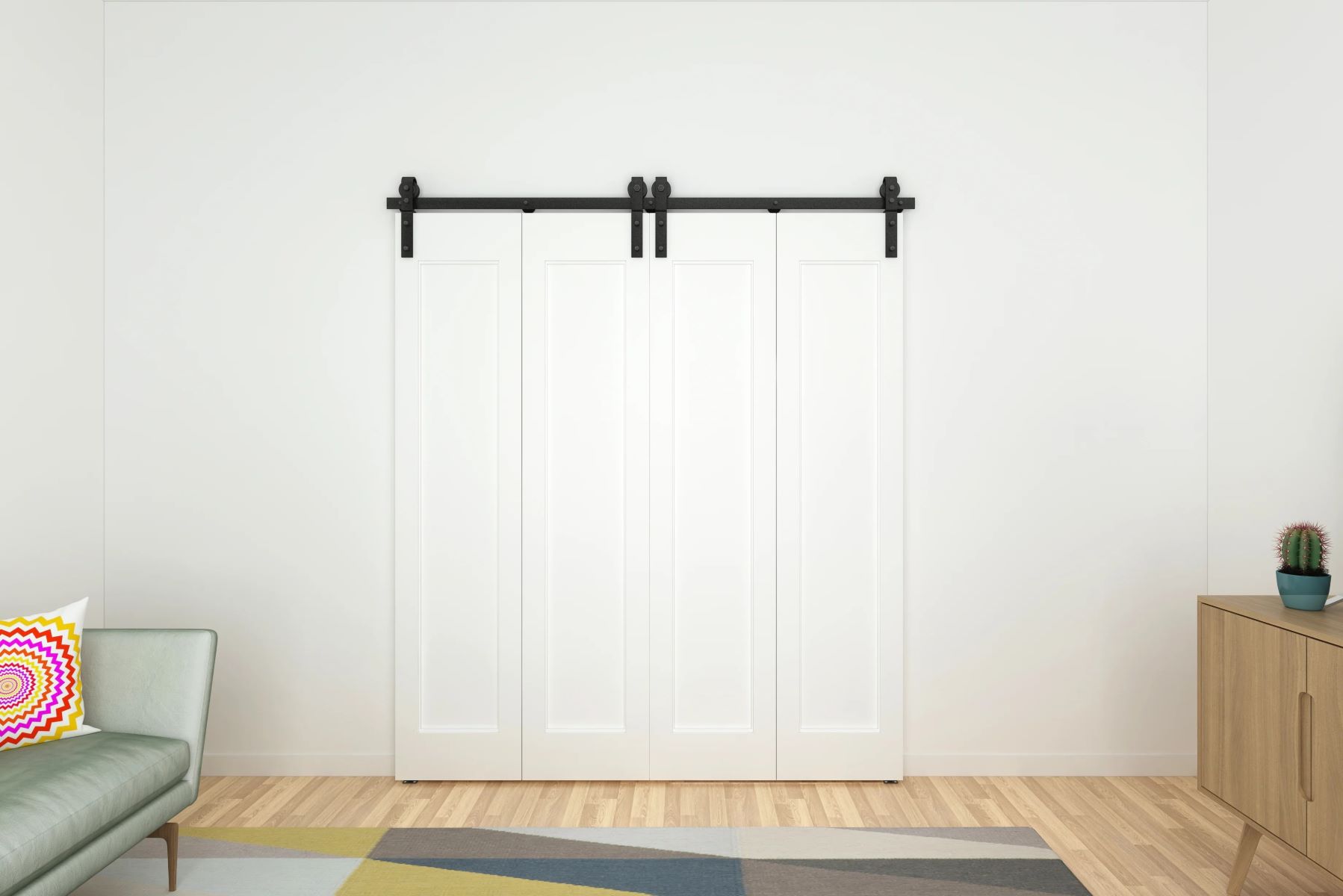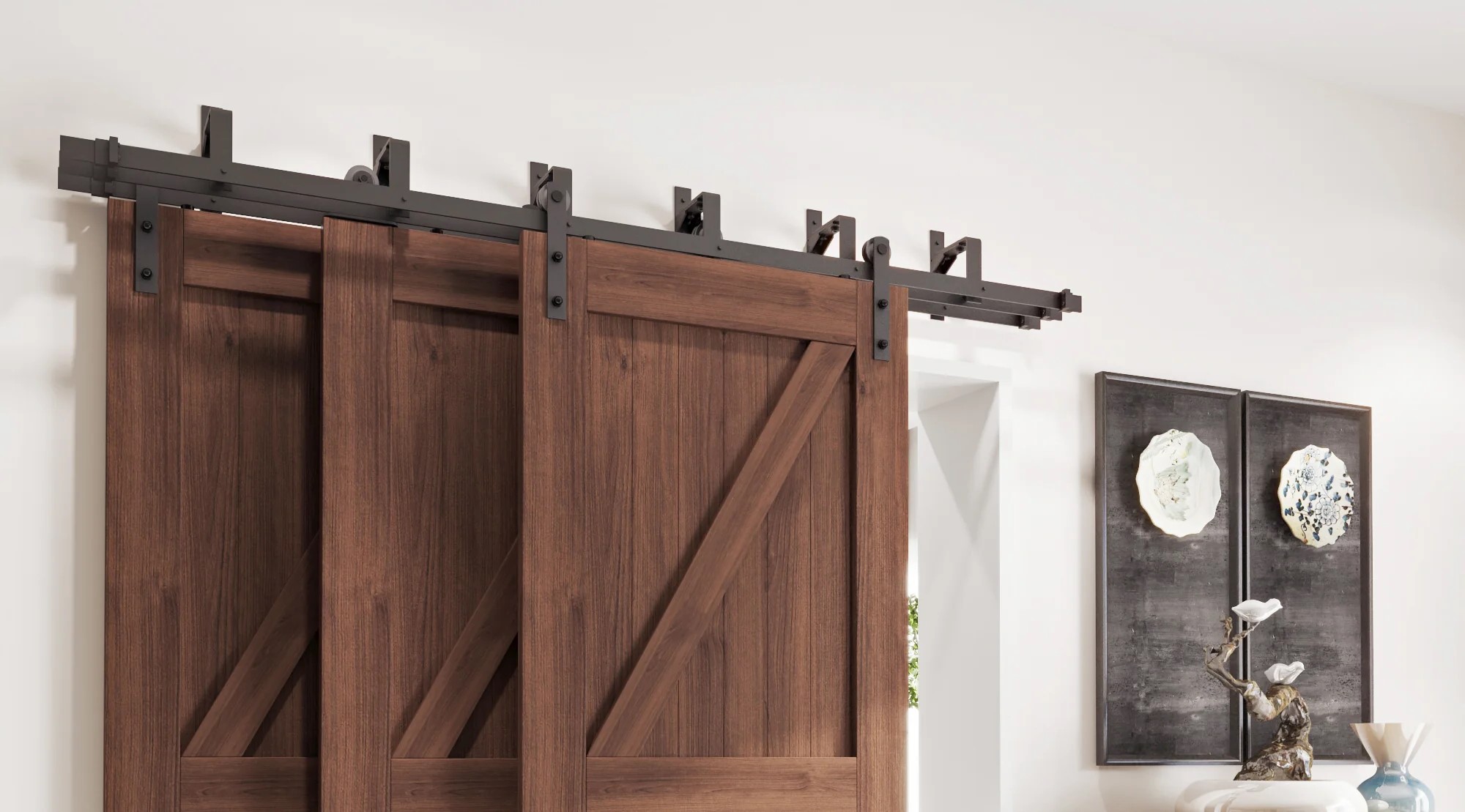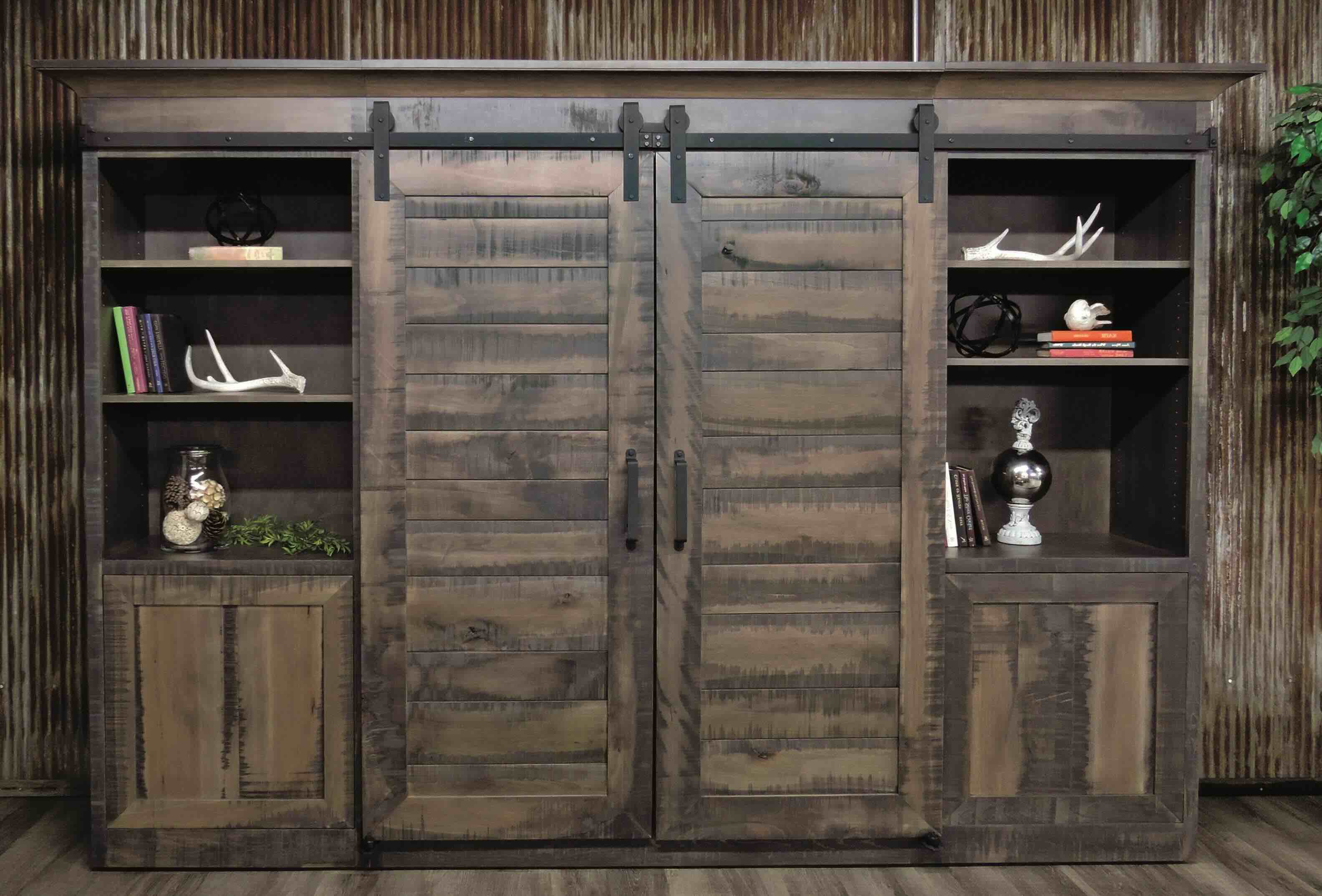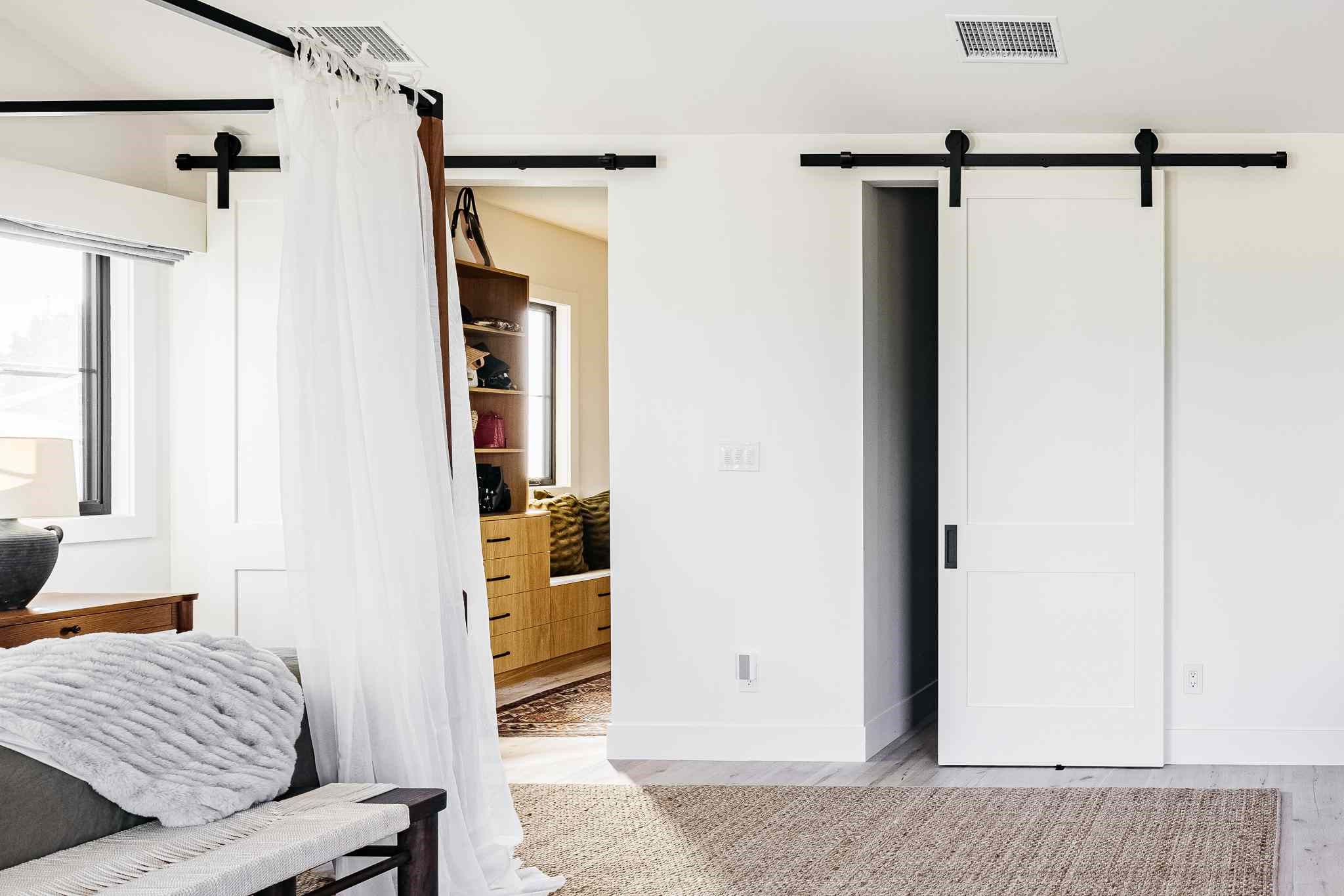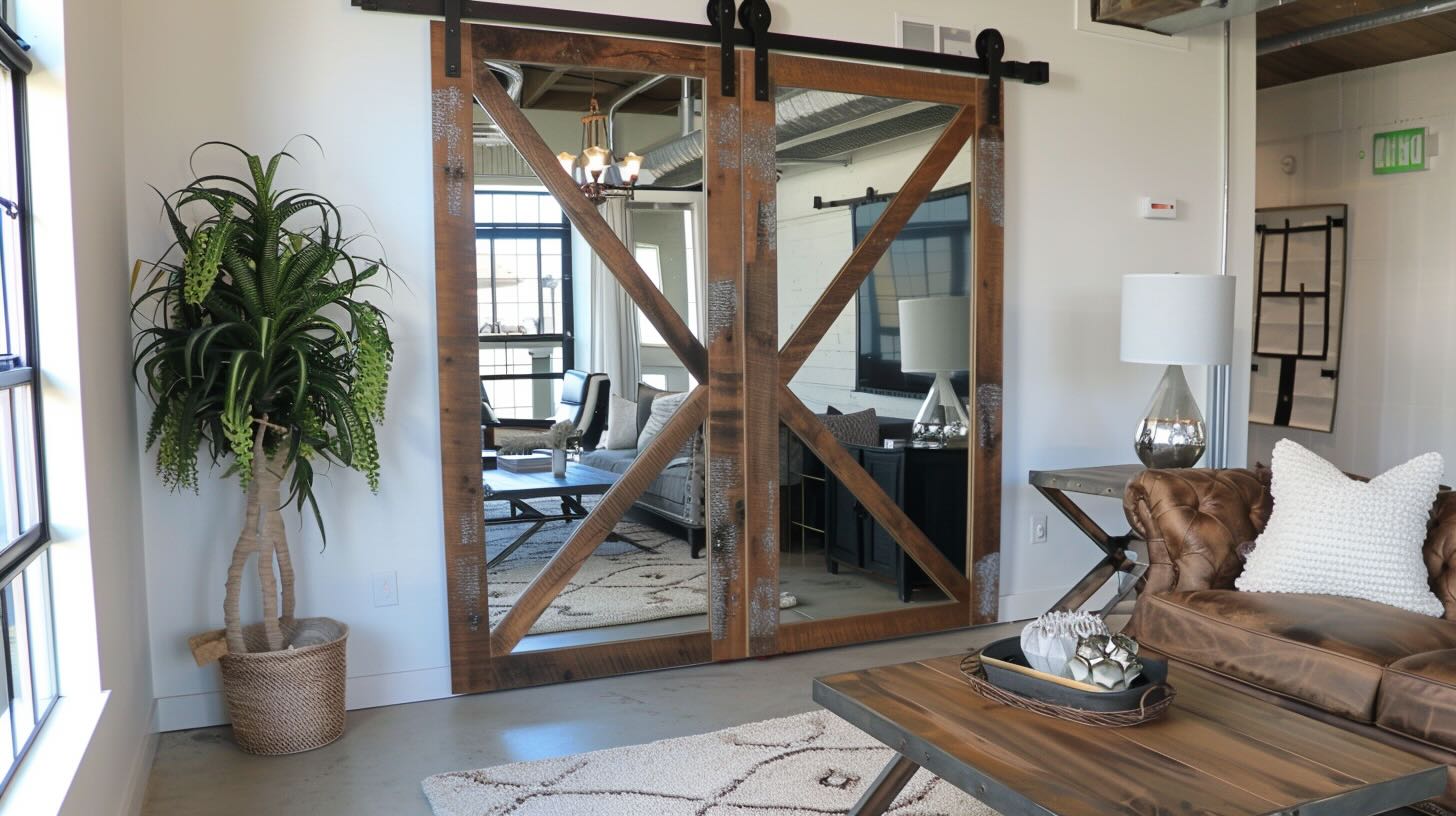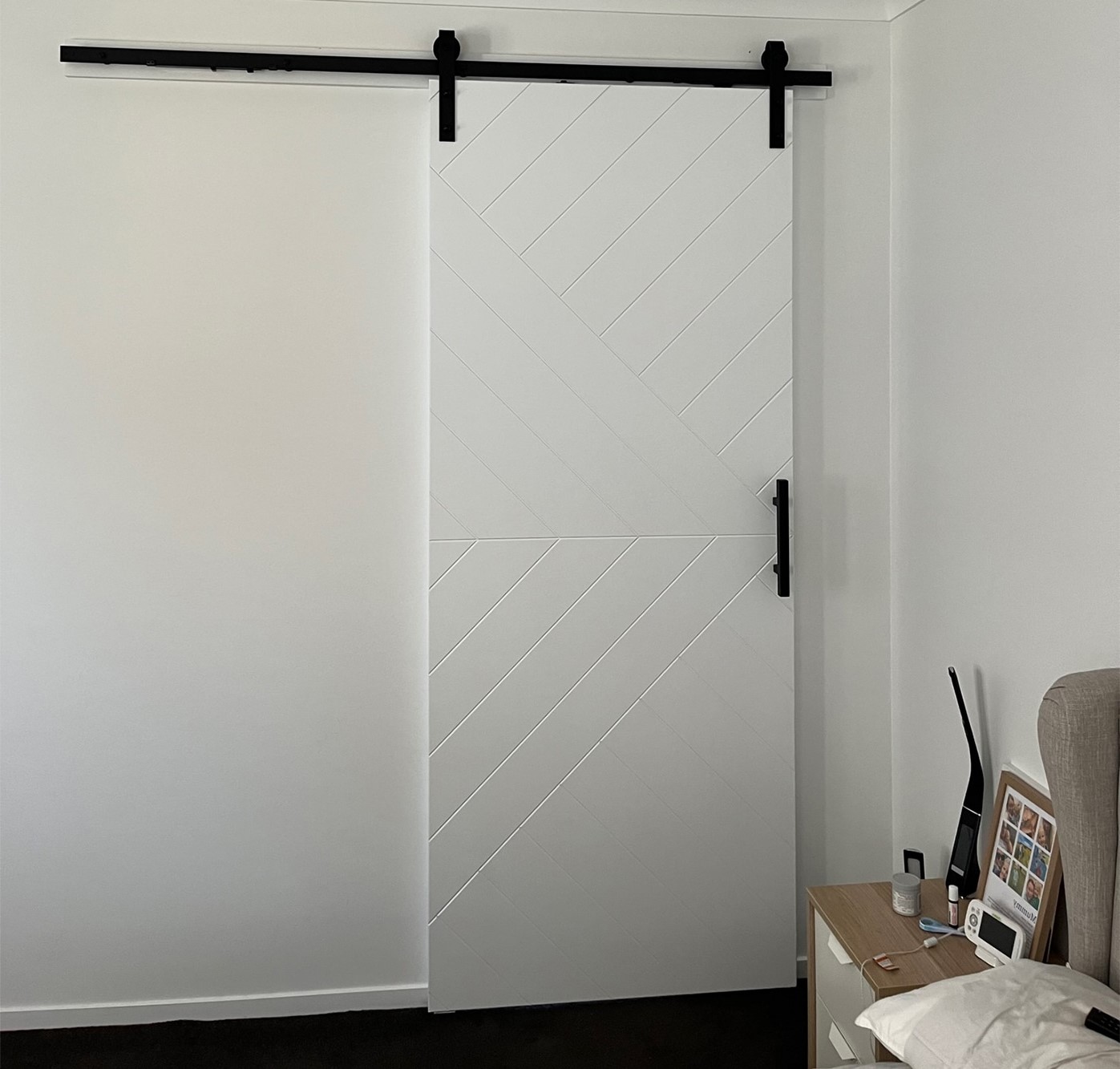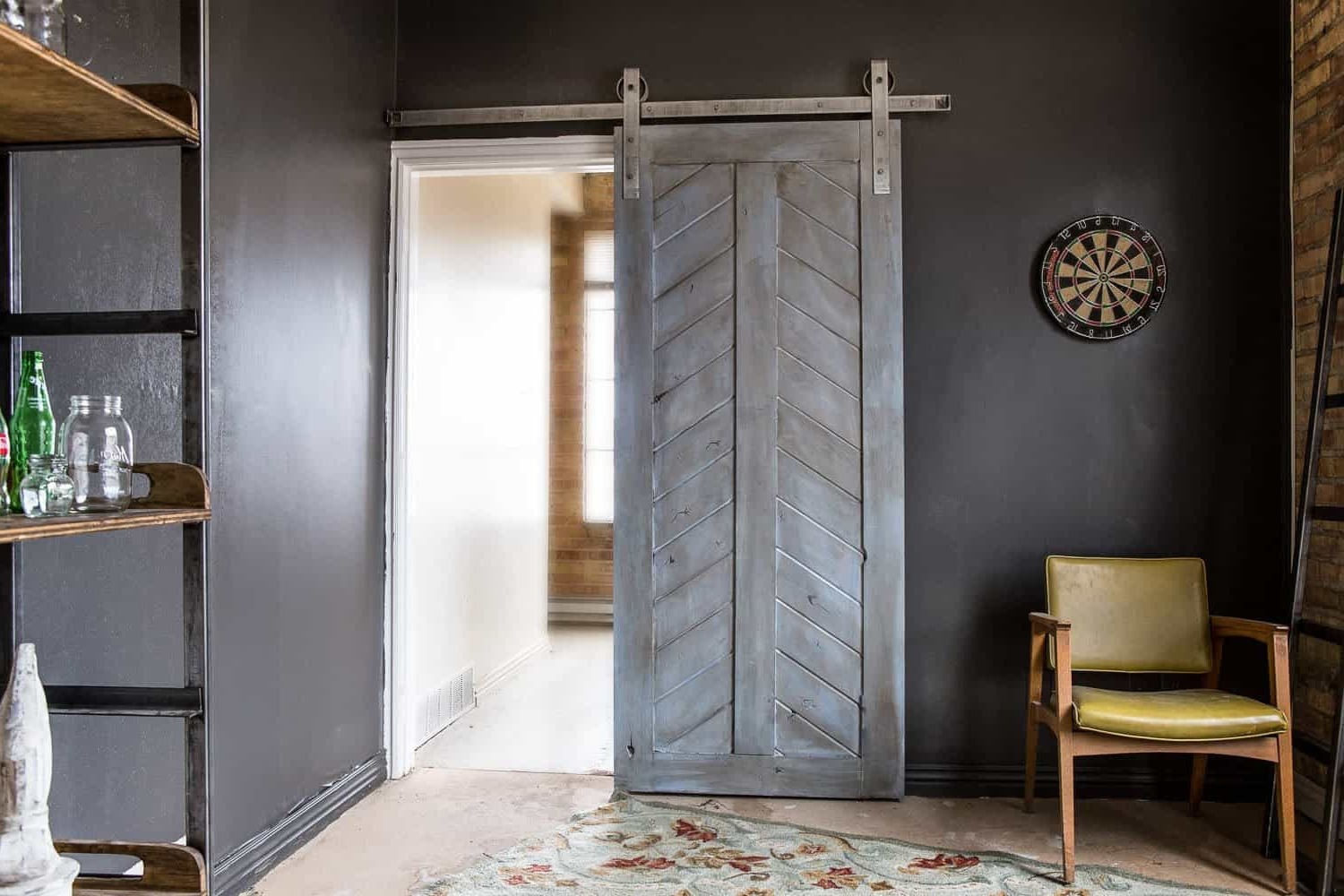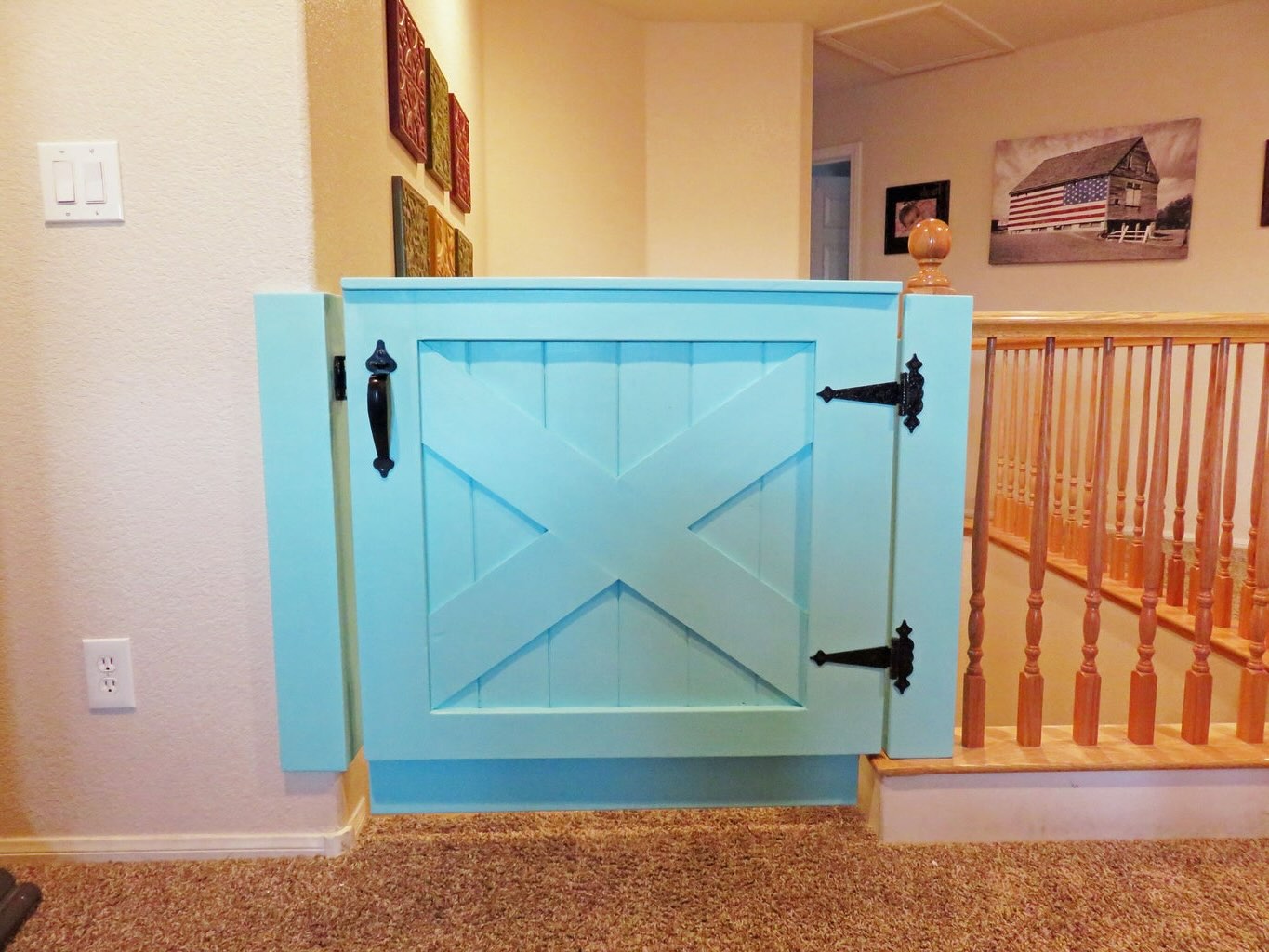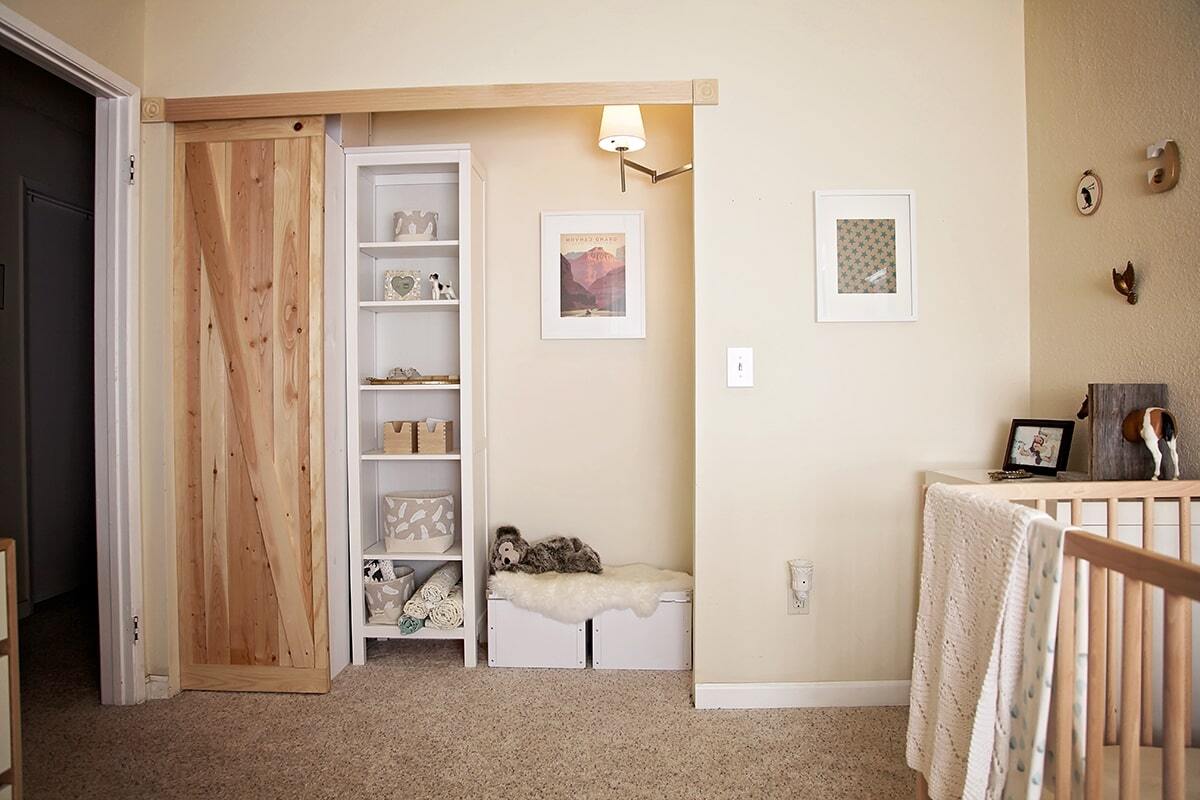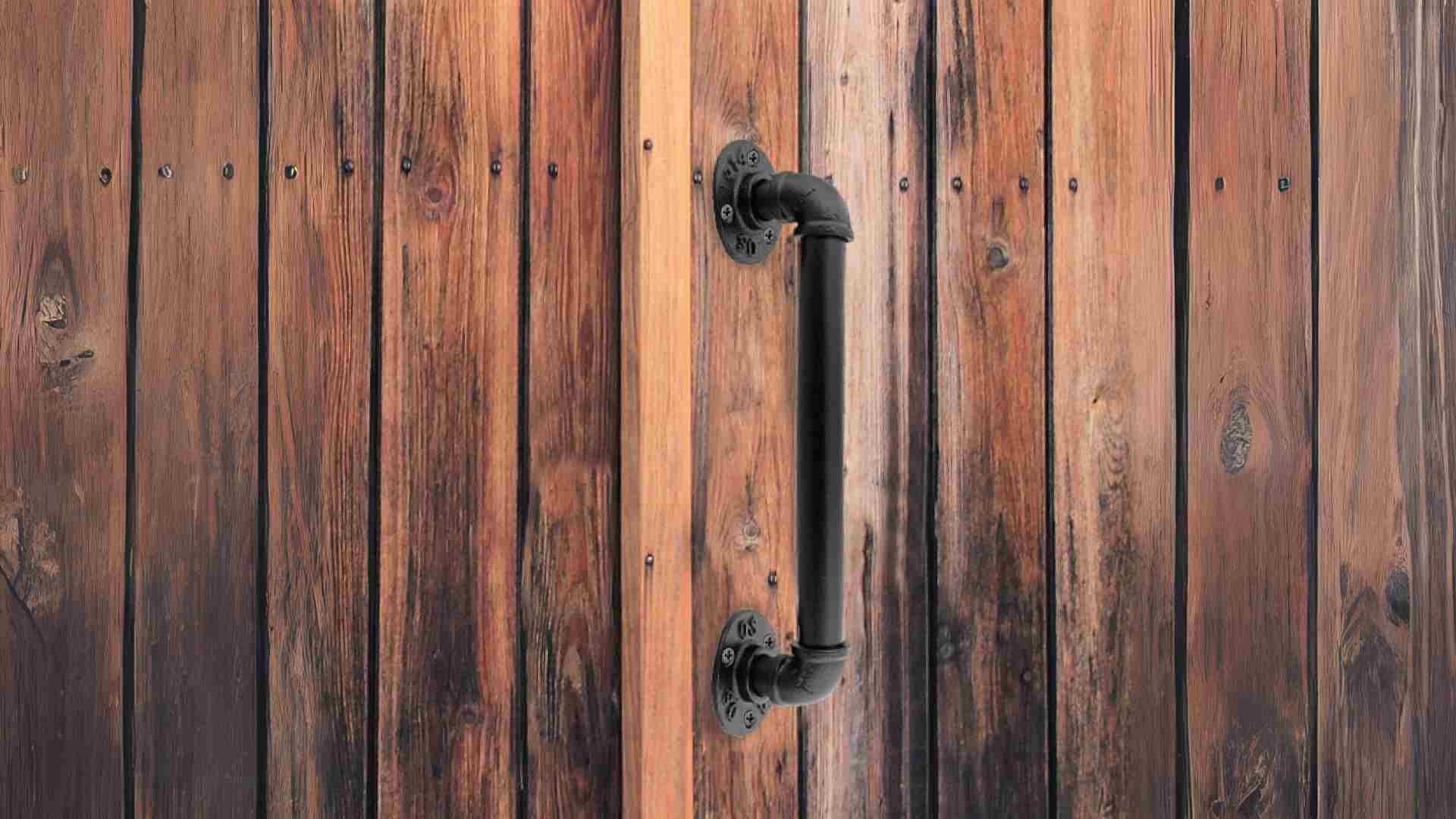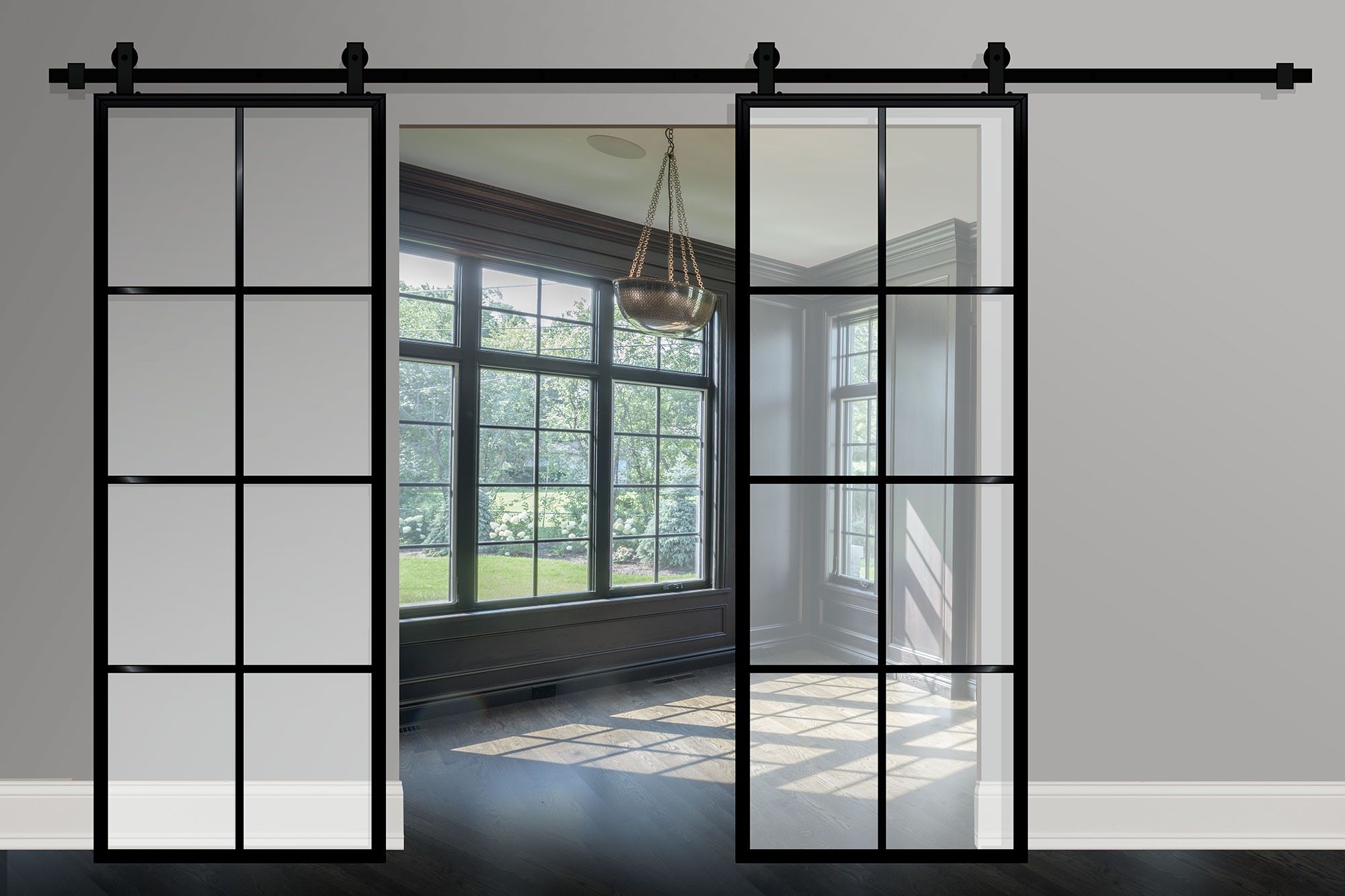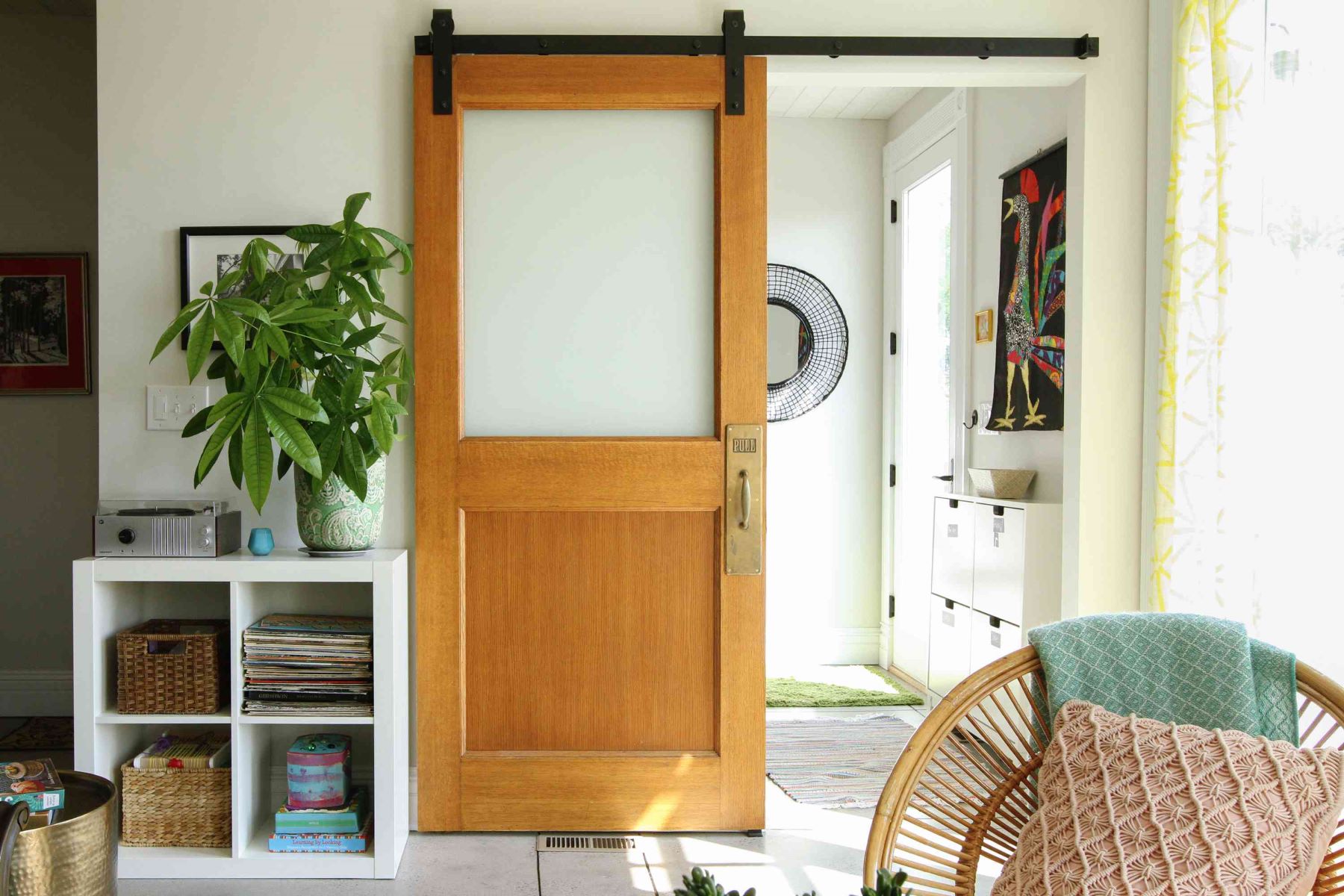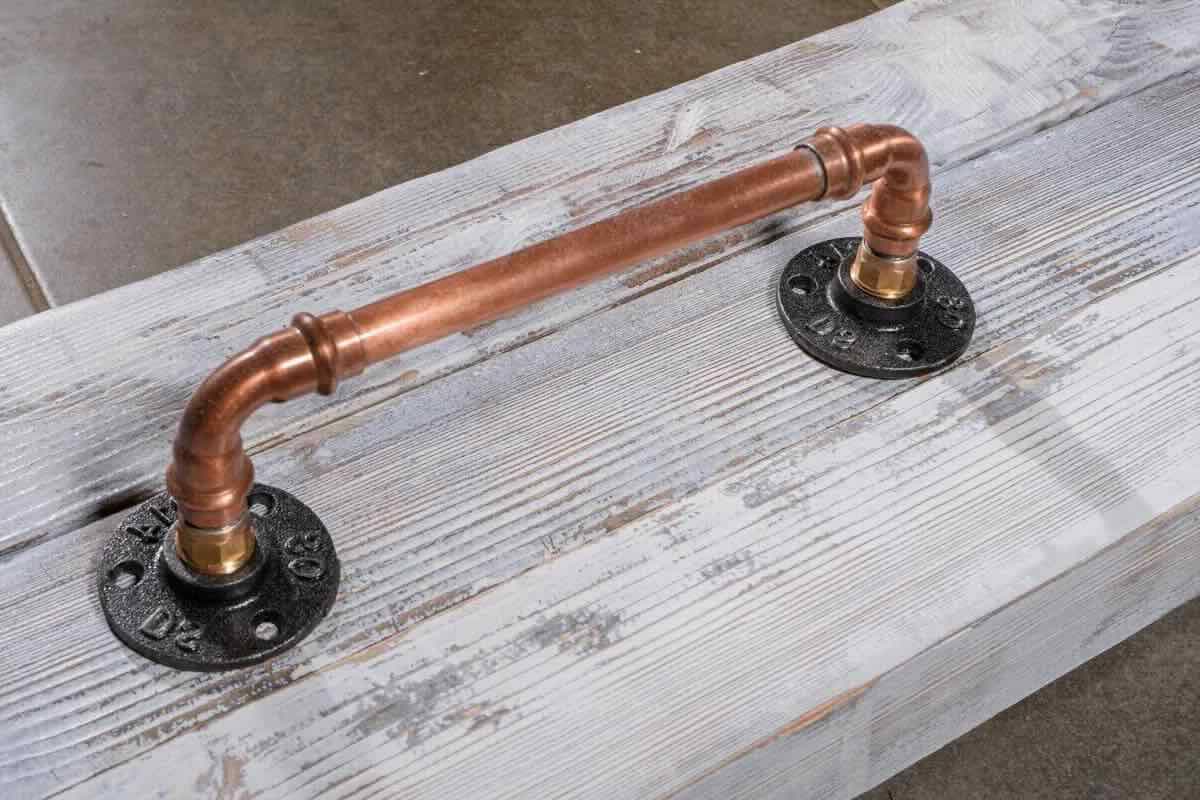Home>Home & Furniture>Doors & Windows>DIY Barn Door: Step-by-Step Guide To Building Your Own
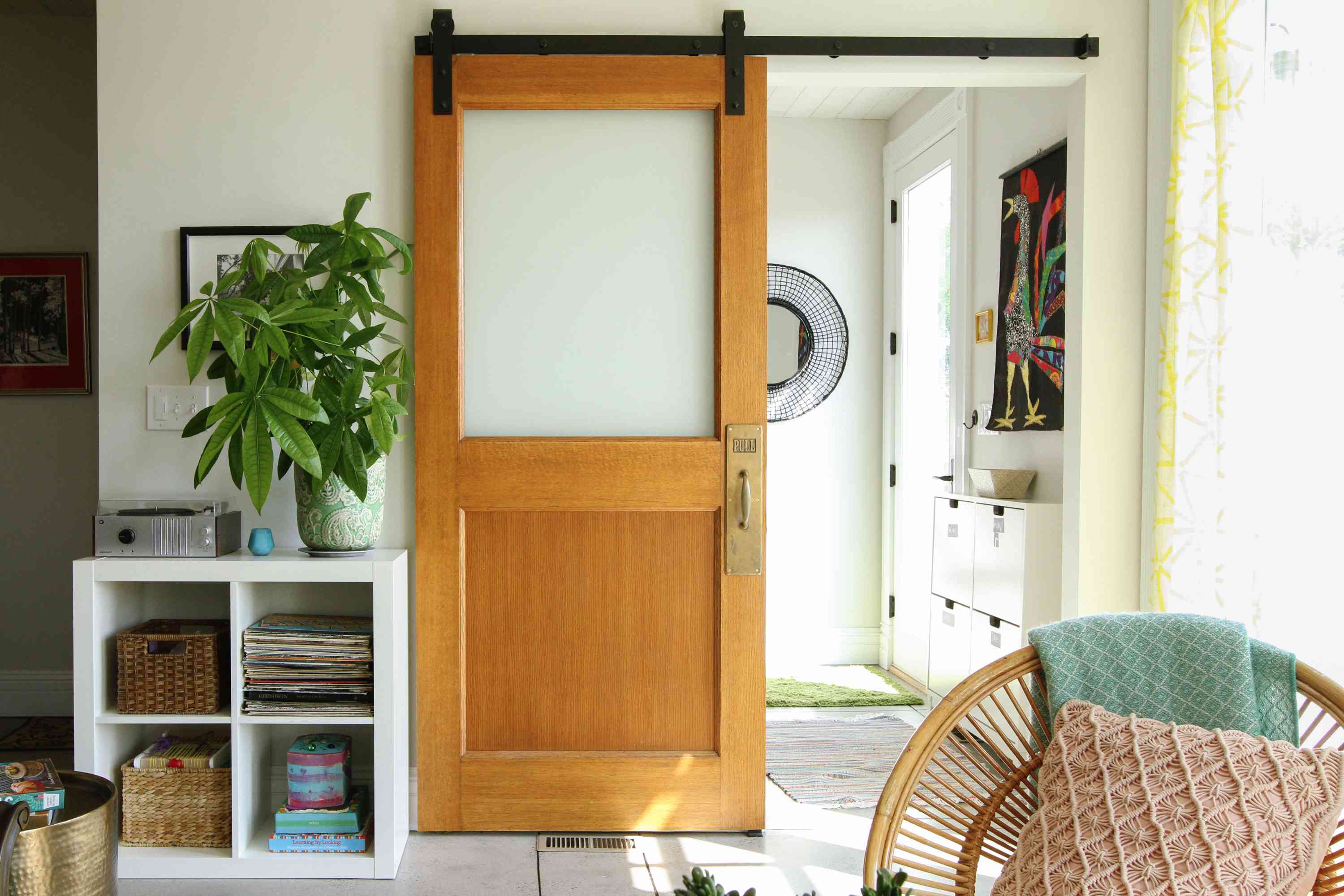

Doors & Windows
DIY Barn Door: Step-by-Step Guide To Building Your Own
Published: February 20, 2024
Editor-in-Chief with a decade in home renovation and a passion for vintage furniture. Diane is known for her weekend treasure hunts at flea markets, enriching our content with unique style insights.
Learn how to build your own DIY barn door with our step-by-step guide. Create a stylish and functional addition to your home with our expert tips and instructions. Perfect for doors & windows projects.
(Many of the links in this article redirect to a specific reviewed product. Your purchase of these products through affiliate links helps to generate commission for Twigandthistle.com, at no extra cost. Learn more)
Introduction
Are you looking to add a touch of rustic charm and functionality to your home? Building your own DIY barn door can be a rewarding and cost-effective project that brings a unique aesthetic to any space. Whether you're aiming to create a sliding door for a closet, room divider, or even a decorative accent, a DIY barn door offers a versatile and stylish solution.
Crafting your own barn door allows you to tailor the design to suit your specific preferences and the dimensions of your space. By embarking on this DIY endeavor, you can unleash your creativity and woodworking skills while achieving a customized and personalized result that complements your home's interior.
In this comprehensive guide, we will walk you through the step-by-step process of constructing your very own barn door. From gathering the necessary materials and tools to the final installation of the hardware, you'll gain valuable insights and practical tips to ensure a successful and satisfying DIY project.
So, roll up your sleeves, gather your tools, and get ready to embark on a fulfilling journey of craftsmanship and creativity. Let's dive into the details of how to build a stunning DIY barn door that will become a standout feature in your home.
Read more: How to Make Barn Door Locks
Materials and Tools Needed
Before diving into the construction of your DIY barn door, it's essential to gather all the necessary materials and tools to ensure a smooth and efficient building process. Here's a comprehensive list of what you'll need:
Materials:
- Wood: Select high-quality lumber for the door panels and frame. Common choices include pine, cedar, or reclaimed wood for a more rustic look.
- Crossbars: These will add structural support and aesthetic appeal to the door. Opt for wood that complements the main panels.
- Wood Glue: Choose a strong, durable wood glue to securely bond the various components of the door.
- Wood Stain or Paint: Decide on a finish that aligns with your desired aesthetic. Stain enhances the natural beauty of the wood, while paint allows for color customization.
- Polyurethane Sealant: This will protect the wood from moisture and wear, ensuring the longevity of your barn door.
- Sandpaper: Select varying grits to smooth the wood surfaces and prepare them for finishing.
- Barn Door Hardware Kit: Purchase a quality sliding door hardware kit, including the track, rollers, and necessary bolts and screws.
Tools:
- Measuring Tape: Accurate measurements are crucial for a precise fit, so invest in a reliable measuring tape.
- Circular Saw or Miter Saw: These tools are essential for cutting the wood to the required dimensions.
- Drill and Bits: A power drill with assorted drill bits will be used for creating pilot holes and installing hardware.
- Screwdriver Set: Ensure you have both flathead and Phillips head screwdrivers for various fastening needs.
- Clamps: These will aid in securing the wood during assembly and glue application.
- Paintbrushes or Stain Applicators: Choose high-quality brushes or applicators for a smooth and even finish.
- Safety Gear: Don't forget protective eyewear, gloves, and a dust mask for safety during cutting and sanding.
By gathering these materials and tools, you'll be well-prepared to embark on your DIY barn door project with confidence and efficiency. With everything in hand, you're ready to move on to the exciting process of measuring and cutting the wood for your custom barn door.
Step 1: Measure and Cut the Wood
The initial step in crafting your DIY barn door involves precise measurements and accurate wood cutting to ensure a seamless assembly process. Begin by measuring the dimensions of the door opening or the space where the barn door will be installed. Take into account the height and width, allowing for a slight overlap on each side to guarantee proper coverage and privacy when the door is closed.
Once you have the exact measurements, transfer them to the selected wood panels using a pencil and a straight edge. Use a circular saw or miter saw to carefully cut the wood according to the marked dimensions. It's crucial to maintain straight and clean cuts to achieve a professional-looking result.
After cutting the main panels, proceed to measure and cut the wood for the frame. The frame pieces should align with the dimensions of the door panels, creating a uniform and sturdy structure. Additionally, if your design includes crossbars, measure and cut these pieces to the appropriate length, ensuring they fit securely within the frame.
As you work through the cutting process, double-check the accuracy of each cut to avoid discrepancies that could hinder the assembly later on. Precision at this stage is key to achieving a well-fitted and visually appealing barn door.
Once all the wood components are cut to the correct sizes, lay them out to assess the fit and alignment. This step allows you to make any necessary adjustments before moving on to the assembly phase. By taking the time to measure and cut the wood with precision, you set the foundation for a successful construction process, bringing you one step closer to completing your custom DIY barn door.
With the wood cut to perfection, you're ready to progress to the next phase of assembling the frame and bringing your barn door vision to life.
Read more: DIY Door Building Guide
Step 2: Assemble the Frame
With the wood components precisely cut to the required dimensions, it's time to move on to the pivotal stage of assembling the frame for your DIY barn door. This step is crucial in creating a sturdy and well-structured foundation that will support the overall integrity of the door.
Begin by laying out the main panels and frame pieces in the designated assembly area. Ensure that the work surface is flat and spacious enough to accommodate the door components without constraints. With the wood pieces arranged in the correct orientation, use wood glue to adhere the frame pieces to the edges of the door panels. Apply a generous but even layer of wood glue to create a strong bond between the components.
Once the frame pieces are positioned and secured with wood glue, reinforce the joints by using clamps to hold the assembly in place. This step is essential for allowing the wood glue to set and create a durable connection between the frame and panels. Be sure to wipe off any excess glue that may seep out during clamping to maintain a clean and professional finish.
After the glue has fully dried and the frame is securely attached to the door panels, reinforce the structure by driving wood screws through the frame and into the panels. This additional fastening method provides extra stability and ensures that the frame remains securely affixed to the door. Pre-drilling pilot holes for the screws will prevent the wood from splitting and facilitate a smoother installation process.
As you progress through the assembly, periodically check for squareness and alignment to guarantee that the frame is straight and true. This attention to detail will result in a well-constructed and visually appealing barn door that functions seamlessly when installed.
With the frame securely assembled and reinforced, your DIY barn door is taking shape, ready to move on to the next phase of adding the crossbars to enhance both the structural integrity and aesthetic appeal of the door.
By meticulously following these assembly steps, you're well on your way to creating a custom barn door that reflects your craftsmanship and attention to detail.
Step 3: Add the Crossbars
Adding crossbars to your DIY barn door serves both functional and aesthetic purposes, enhancing the overall strength and visual appeal of the door. These horizontal or diagonal bars not only contribute to the structural integrity of the door but also introduce a touch of character and charm to its design.
Begin by determining the placement of the crossbars on the door panels. This decision is influenced by the desired aesthetic and the specific dimensions of the door. Whether you opt for a traditional pattern of evenly spaced horizontal bars or a more contemporary diagonal arrangement, carefully measure and mark the positions where the crossbars will be installed.
Once the placement is determined, use wood glue to secure the crossbars onto the door panels. Apply a liberal amount of wood glue to the back of each crossbar, ensuring even coverage for a strong bond. Position the crossbars according to your markings, pressing them firmly onto the door panels to create a secure connection.
To reinforce the attachment of the crossbars, utilize clamps to hold them in place while the wood glue sets. This step is essential for preventing any shifting or misalignment during the drying process, resulting in a uniform and professional finish.
After the wood glue has fully cured, further strengthen the bond by driving wood screws through the crossbars and into the door panels. Pre-drilling pilot holes for the screws will prevent the wood from splitting and facilitate a seamless installation. This dual method of adhesion ensures that the crossbars are firmly and durably affixed to the door, contributing to its overall stability and longevity.
Once the crossbars are securely in place, take the time to sand any rough edges and ensure a smooth transition between the crossbars and the door panels. This step not only enhances the tactile appeal of the door but also prepares the surface for the application of wood stain or paint, allowing you to customize the appearance to suit your desired aesthetic.
By adding the crossbars to your DIY barn door with precision and care, you elevate its structural integrity while infusing it with a distinctive visual allure. With this step completed, your custom barn door is ready for the transformative process of sanding and staining to achieve a refined and polished finish.
Step 4: Sand and Stain the Door
With the frame assembled and the crossbars securely in place, the next crucial step in the construction of your DIY barn door is the process of sanding and staining. This transformative phase not only enhances the visual appeal of the door but also ensures a smooth and durable finish that will withstand the test of time.
Begin by thoroughly sanding the entire surface of the door, including the frame, panels, and crossbars. Utilize varying grits of sandpaper, starting with a coarser grit to remove any rough spots, imperfections, and splinters. Gradually progress to finer grits to achieve a silky-smooth texture and prepare the wood for the application of stain or paint.
As you sand, pay close attention to the edges and corners, ensuring that they are gently rounded to prevent sharp edges and create a more polished appearance. Additionally, be mindful of any wood glue residue or excess that may have accumulated during the assembly process, as these areas require extra care to achieve a uniform finish.
Once the sanding process is complete, thoroughly wipe down the entire door with a clean, damp cloth to remove any dust and debris. This step is essential for ensuring a pristine surface that is ready to receive the chosen finish.
Now, it's time to apply the wood stain to bring out the natural beauty of the wood and imbue the door with a rich, lustrous hue. Select a high-quality wood stain in a shade that complements your interior decor and personal style. Using a paintbrush or stain applicator, generously apply the stain in the direction of the wood grain, ensuring even coverage across the entire surface of the door.
Allow the first coat of stain to penetrate the wood for the recommended duration, typically 5-15 minutes, before wiping off any excess with a clean, lint-free cloth. This process allows the wood to absorb the stain, enhancing its color and grain while creating a striking visual impact.
If a deeper hue is desired, additional coats of stain can be applied after allowing the previous coat to dry completely. Be sure to follow the manufacturer's instructions regarding drying times and reapplication intervals to achieve the desired depth of color.
Once the stain has fully dried and cured, protect the door's surface and enhance its longevity by applying a polyurethane sealant. This protective layer shields the wood from moisture, wear, and UV damage, ensuring that your DIY barn door remains resilient and visually captivating for years to come.
By meticulously sanding and staining your DIY barn door, you elevate its aesthetic allure while safeguarding its structural integrity. With this transformative step completed, your custom barn door is primed for the final phase of installing the hardware, bringing you one step closer to enjoying the functional and visual splendor of your handcrafted creation.
Step 5: Install the Hardware
With the frame assembled, crossbars in place, and the wood meticulously sanded and stained to perfection, the final step in bringing your DIY barn door to life is the installation of the hardware. This pivotal phase not only ensures the functionality of the door but also adds a touch of industrial elegance to its overall aesthetic.
Begin by selecting a high-quality barn door hardware kit that aligns with the dimensions and weight of your custom door. These kits typically include a track, rollers, and all the necessary bolts and screws for installation. Carefully unpack the hardware components and familiarize yourself with the individual parts to streamline the installation process.
Locate the ideal placement for the sliding door track above the door opening, ensuring that it is level and securely anchored to the wall studs. Use a stud finder to identify the precise locations for mounting the track, allowing for smooth and effortless door operation. Once the track is positioned, secure it in place using the provided hardware, ensuring that it is firmly attached and capable of supporting the weight of the door.
Next, affix the rollers to the top edge of the door, aligning them with the track to facilitate seamless sliding motion. Ensure that the rollers are securely fastened to the door, providing stability and smooth operation when the door is in use. With the rollers in place, carefully lift the door and position it within the installed track, allowing it to smoothly glide along the length of the track.
Once the door is suspended from the track, test its movement to ensure that it slides effortlessly and without obstruction. Make any necessary adjustments to the roller positioning or track alignment to achieve optimal functionality and a smooth gliding motion. This attention to detail guarantees that your DIY barn door operates flawlessly, adding both practicality and visual appeal to your living space.
With the hardware securely installed and the door effortlessly gliding along its track, your custom DIY barn door is now ready to take its place as a striking and functional feature in your home. Whether used as a closet door, room divider, or decorative accent, your handcrafted barn door is a testament to your craftsmanship and creativity, adding a touch of rustic charm and character to your living space.
Read more: How to Build a DIY Barn Door Cabinet
Conclusion
In conclusion, embarking on the journey of building your own DIY barn door is a gratifying endeavor that combines craftsmanship, creativity, and practicality. By following the step-by-step guide outlined in this comprehensive article, you have gained valuable insights into the meticulous process of constructing a custom barn door that reflects your personal style and enhances the aesthetic appeal of your living space.
From the initial stage of measuring and cutting the wood to the transformative phases of assembling the frame, adding crossbars, and meticulously sanding and staining the door, each step has contributed to the creation of a visually captivating and structurally sound barn door. The attention to detail and precision applied throughout the construction process ensures that your DIY barn door is not only a functional element but also a striking focal point that adds character and charm to your home.
The installation of the barn door hardware marks the culmination of your efforts, bringing the door to life as it seamlessly glides along its track, serving as a versatile and eye-catching feature in your living space. Whether used to partition a room, conceal a closet, or make a bold design statement, your handcrafted barn door stands as a testament to your dedication to quality craftsmanship and personalized home decor.
As you admire the finished result of your DIY barn door, take pride in the fact that you have not only created a functional and visually appealing element for your home but also honed your woodworking skills and unleashed your creativity. The process of building a barn door from scratch is a testament to the rewarding nature of hands-on craftsmanship and the satisfaction of bringing a personalized vision to fruition.
With your newly constructed DIY barn door in place, you have added a touch of rustic elegance and practical functionality to your living space, setting the stage for countless moments of admiration and appreciation for your handcrafted creation. Whether it's the warmth of the wood, the smoothness of the sliding motion, or the visual impact of the finished door, your DIY barn door is a reflection of your dedication to craftsmanship and your ability to transform raw materials into a stunning and functional piece of home decor.

